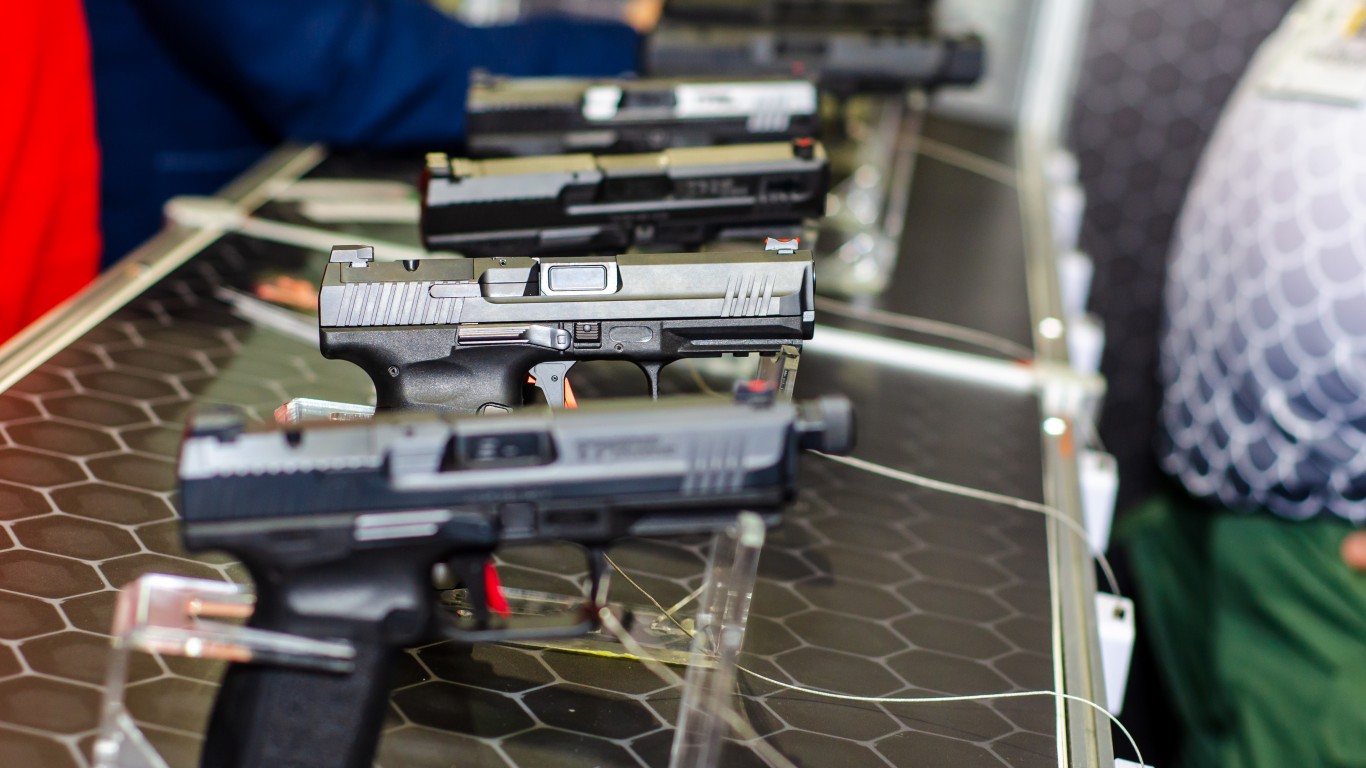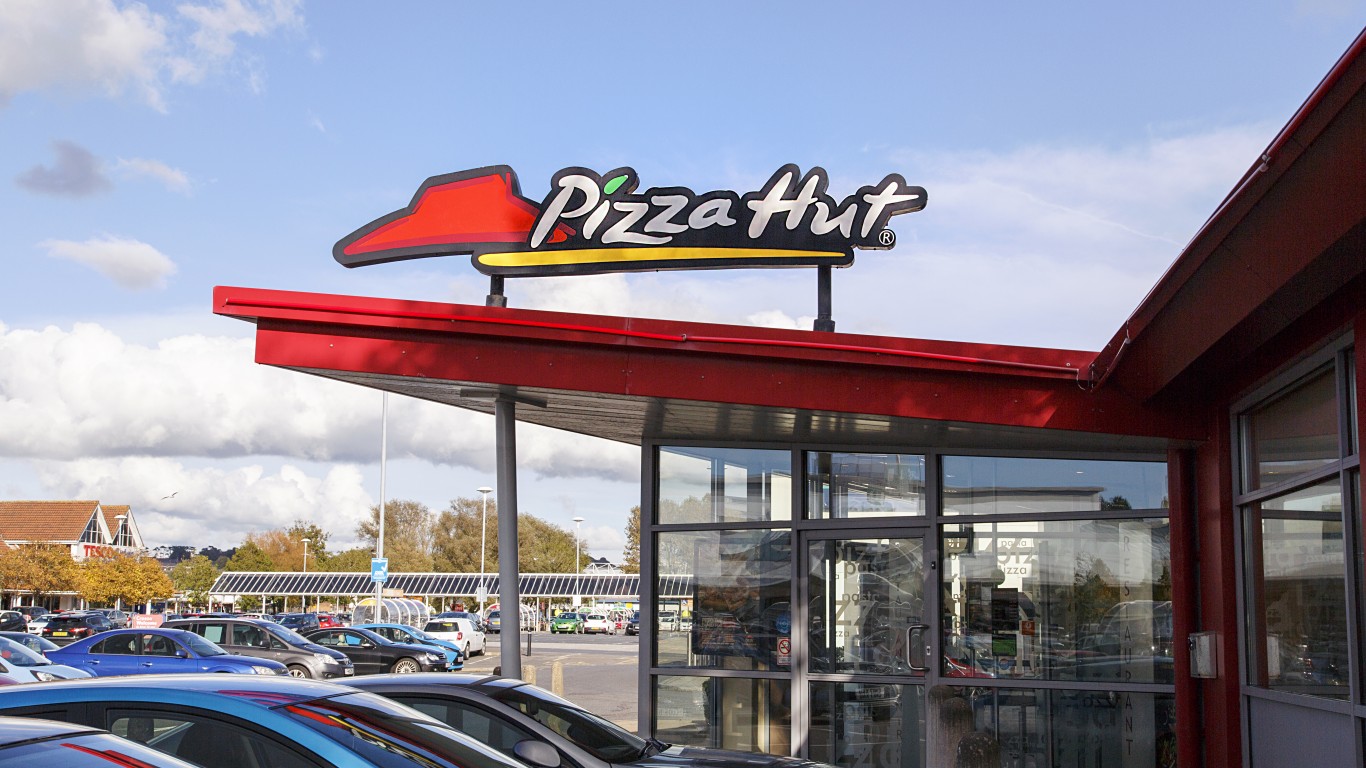
Pizza Hut is one of the most well-known and widespread fast-food pizza chains in the world. They currently have over 19,000 locations in over 100 countries and had a gross profit of over $5 billion in 2022. Today, we are going to take an in-depth look at this company and learn some of the reasons you may want to avoid it.
To compile this list, 24/7 Wall Street used online publications and news stories, publicly-available dietary information, and editorial experience and discretion.
1. Inconsistent Food Products
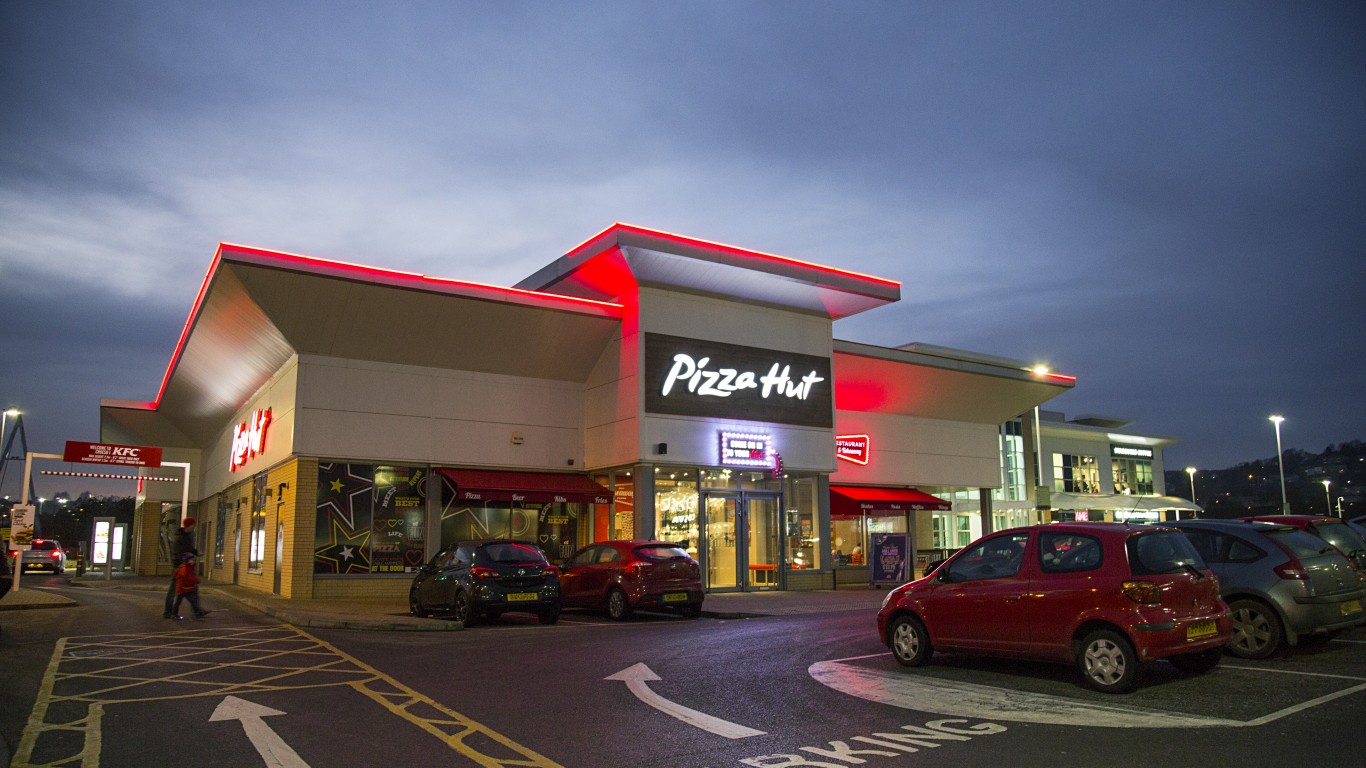
Generally speaking, fast-food restaurants are known for their consistency. To be clear, that doesn’t mean that the food is consistently good, it just means that the product is consistent. When operating at a large scale, creating a consistent product usually comes via specialized tools, rote processes, and a desire to make every single item as close to stock as possible. For Pizza Hut, that doesn’t seem to be one of their strong suits.
It’s a well-known phenomenon that Pizza Hut’s quality will vary from location to location. For a fast food chain, that is an issue. Take Chick-fil-A or McDonald’s, for example. Almost without fail, it doesn’t matter which location you go to; you are going to get an identical chicken sandwich or Big Mac. At Pizza Hut, the location can determine a lot. Issues like under-proofed dough, over or undercooked pizzas, and topping discrepancies plague the chain, and forums all over are keen to point this out (many of the whistleblowers are previous employees themselves).
2. Record High Salt Levels
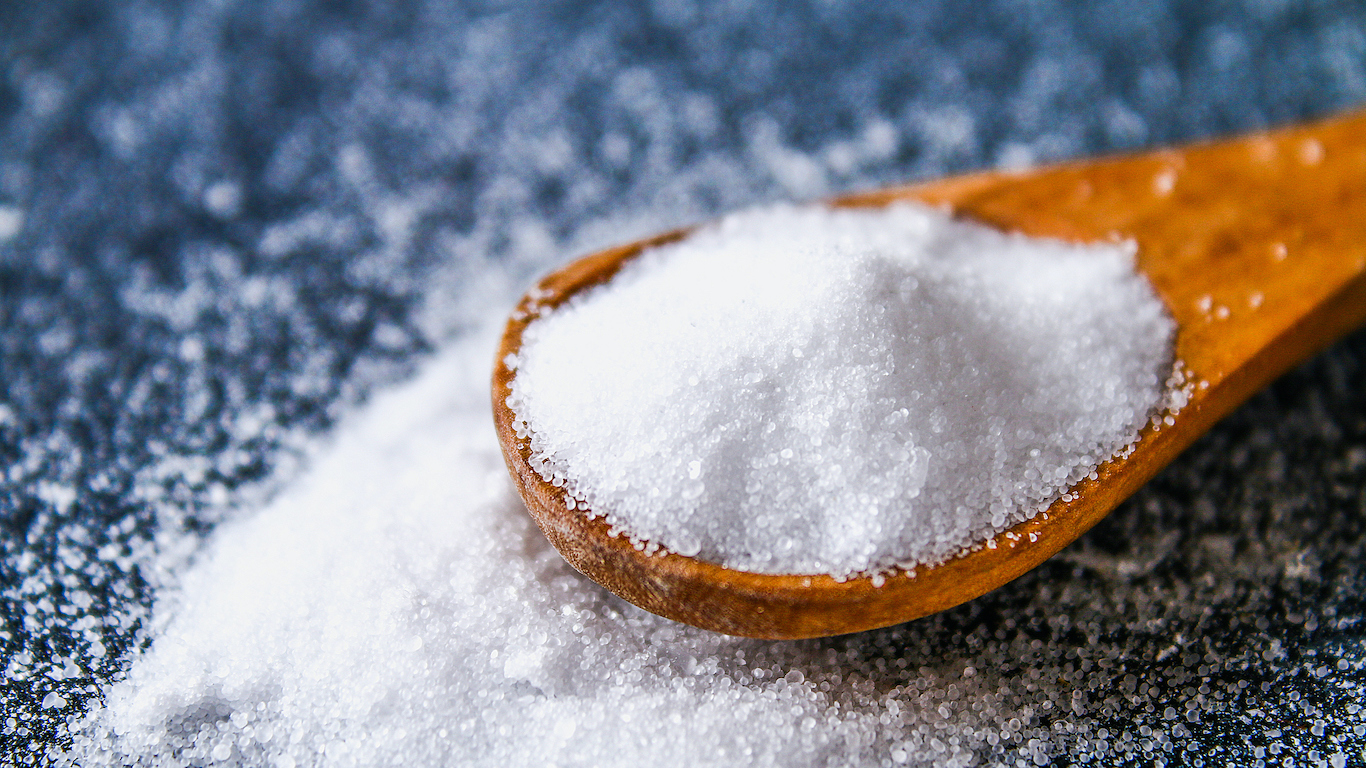
In October 2007, Pizza Hut faced some criticism in the United Kingdom due to the excessive salt content found in its meals. Some menu items were revealed to contain more than twice the daily recommended amount of salt for an adult. The issue was particularly bad when they looked at the toppings that were most popular, namely ham, sausage, and bacon, which naturally contribute to elevated salt levels.
To address these concerns and align with the Food Standards Agency’s 2010 target for salt levels in foods, Pizza Hut did change course and took corrective action between 2008 and 2010. The result was a reduction of 15% of its sodium levels across the menu. That being said, 15% less in something that has twice the daily value of sodium isn’t really that much of a difference.
If sodium levels are important for you, Pizza Hut is probably not the place to eat.
3. Poor Employee Treatment

Fast food isn’t a place that is known to be great for workers. Low wages, poor conditions, and long hours make it extremely tough. Pizza Hut may be one of the worst, even when just considering fast food chains alone. Here’s an example.
In July 2014, Pizza Hut found itself under some legal stress when delivery drivers in the United States gathered together and took action via filing a class-action lawsuit. The leveled some allegations that Pizza Hut was paying delivery drivers net wages below the minimum wage, a violation of the 1938 Fair Labor Standards Act. The complaint specifically mentioned the failure to reimburse drivers for automobile expenses, something that is especially illegal for a company to do (you can’t use employee assets without compensating them for it).
Pizza Hut attempted to have the case dismissed in November 2015, but it was ultimately unsuccessful. The legal proceedings continued and more employees came out and revealed the conditions of working at the company.
In December 2016, the case, known as Linkovich v. Capital Pizza Huts, Inc., et al., was ultimately decided through arbitration. Pizza Hut, in acknowledgment of the grievances and to settle the matter, paid damages as a resolution. Essentially, they paid a big payout to the employees in the case and were legally guilty of what they were accused of.
4. Unhealthy Food
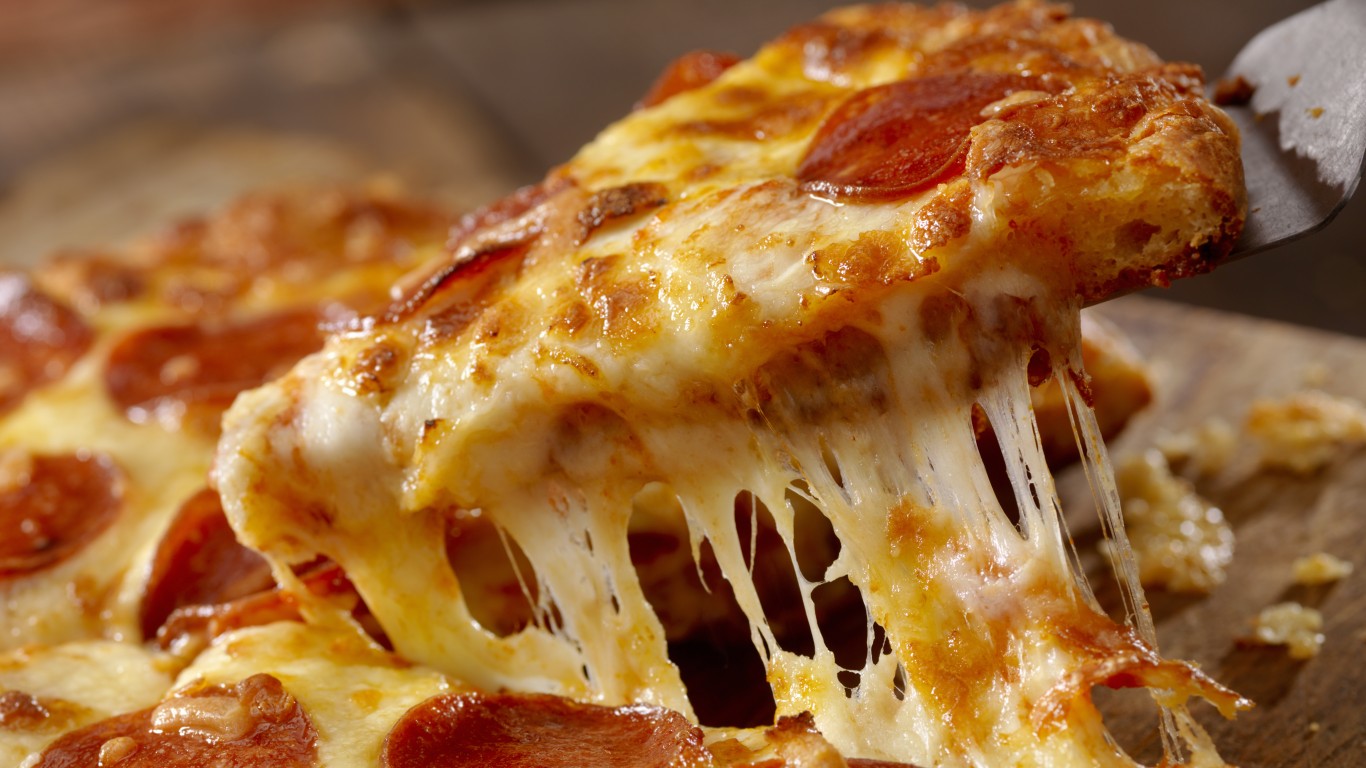
It’s hard to make the argument that pizza is healthy for you. Pretty much everyone knows that it isn’t. Still, there are levels to it, and Pizza Hut most definitely doesn’t offer a product that is healthier than its competitors.
Take a peek at the nutrition facts, and you’ll find that one large slice of hand-tossed cheese pizza from Pizza Hut packs a punch—290 calories, 11 grams of fat, and a whopping 640 milligrams of sodium. Now, throw that into the mix of a typical 2,000-calorie daily diet, and you’ve got a slice that’s not exactly winning any nutritional awards.
Breaking it down, one slice takes up about 15% of your daily recommended calories, up to 23% of your total fat allowance, and nearly 28% of the recommended daily limit for sodium. Also, who’s having a single slice of pizza?
These nutritional figures shout loud and clear—Pizza Hut is a heavyweight in the calorie, fat, and sodium departments. And don’t even get started on the nutritional figures when you pile on extra toppings.
5. Low Quality Pizza

Fast food isn’t hiding where it leans while it walks the tightrope between convenience and quality. Good food is about the quality of its ingredients, and that isn’t really the priority for large establishments looking to maximize efficiency and profit margins.
Pizza Hut is not about to sell you handpicked tomatoes from sun-drenched fields or artisanal cheeses. Instead, it’s about processes, efficiency, and margins. As a result, the pizza it serves isn’t remarkable. Nobody is arguing that Pizza Hut serves up an authentic slice of Italy. What Pizza Hut offers is a quick fix, a convenient option for those moments when the craving for pizza strikes and time is of the essence.
That being said, pizza isn’t in short supply nowadays. Local spots usually do serve a quality pie, and it’s usually available in the same time frame that a Pizza Hut pizza will be ready in. For people looking for solid pizza, Pizza Hut isn’t the spot. The only real advantage they have is the price.
6. Dietary Restrictions

Pizza Hut presents challenges for those with dietary restrictions. Their Udi’s® Gluten-Free Crust is available only in certain participating Pizza Hut® locations, so if you don’t live near one, you are out of luck.
For vegans, Pizza Hut’s reliance on cheese in most menu items makes it less accommodating. This isn’t necessarily Pizza Hut’s fault, but looking to this particular fast-food chain for healthy or dietary alternatives is probably futile.
7. Impact on Local Businesses

Pizza Hut’s global dominance comes at a potential cost to local pizzerias, raising concerns about the impact on communities and families that have been around for decades. While the international reach of chains like Pizza Hut provides convenience, it may inadvertently contribute to the decline of smaller, locally-owned shops.
Through familiarity and extremely low pricing (via supply chain power), Pizza Hut may pull people away from independent pizzerias that often pride themselves on quality ingredients, personalized service, and even a sense of community. When you add in millions of marketing dollars set aside by chains, it can make it hard to compete.
Supporting local pizzerias is not just about enjoying a slice of pizza; it’s a choice that can influence the character and diversity of a neighborhood. Local pizzerias often reflect the cultural identity and culinary creativity of a community, offering a more authentic and unique experience compared to the standardized pies offered by chains. What makes a place like New York City so special? Probably not the Sbarro’s in Times Square (despite Michael Scott’s intentions).
Get Ready To Retire (Sponsored)
Start by taking a quick retirement quiz from SmartAsset that will match you with up to 3 financial advisors that serve your area and beyond in 5 minutes, or less.
Each advisor has been vetted by SmartAsset and is held to a fiduciary standard to act in your best interests.
Here’s how it works:
1. Answer SmartAsset advisor match quiz
2. Review your pre-screened matches at your leisure. Check out the advisors’ profiles.
3. Speak with advisors at no cost to you. Have an introductory call on the phone or introduction in person and choose whom to work with in the future
Thank you for reading! Have some feedback for us?
Contact the 24/7 Wall St. editorial team.
